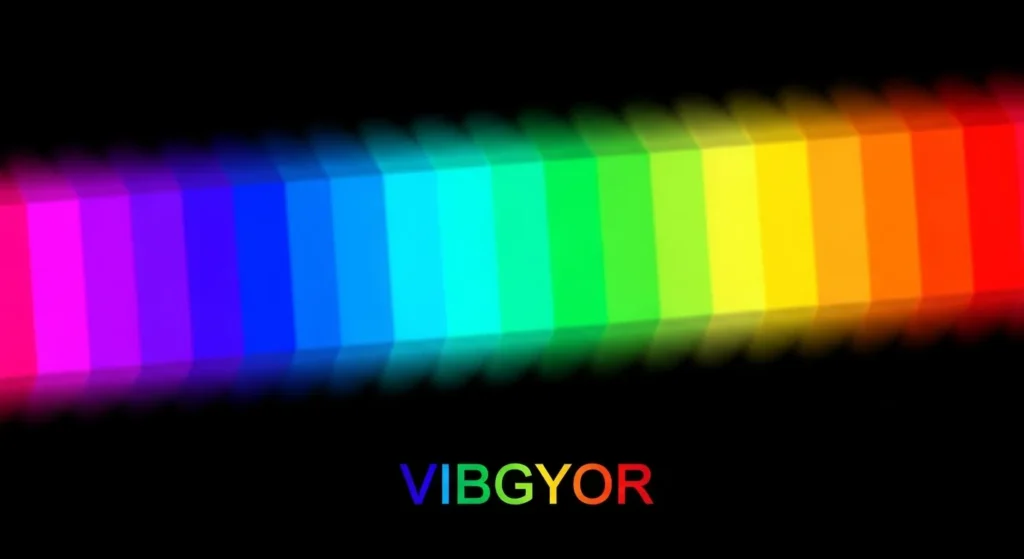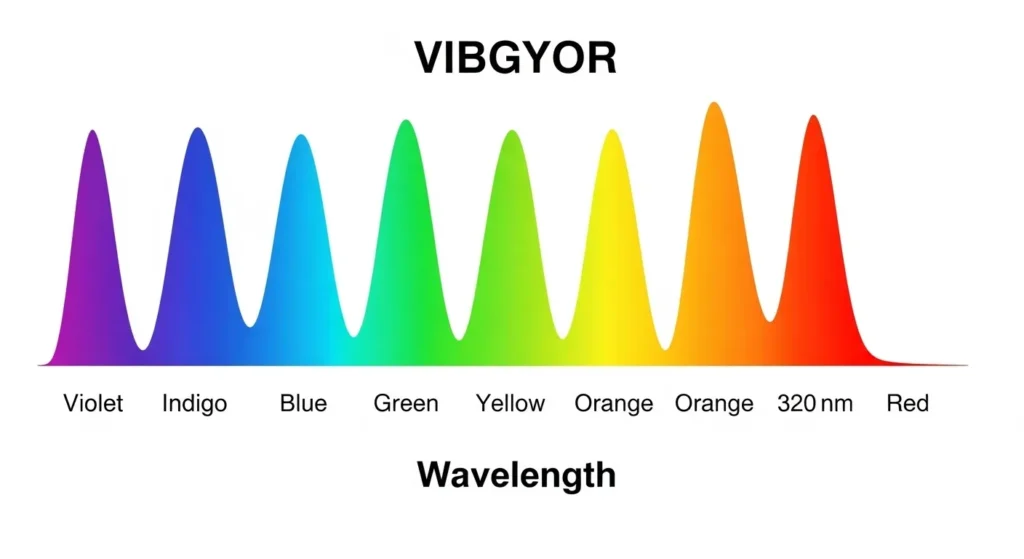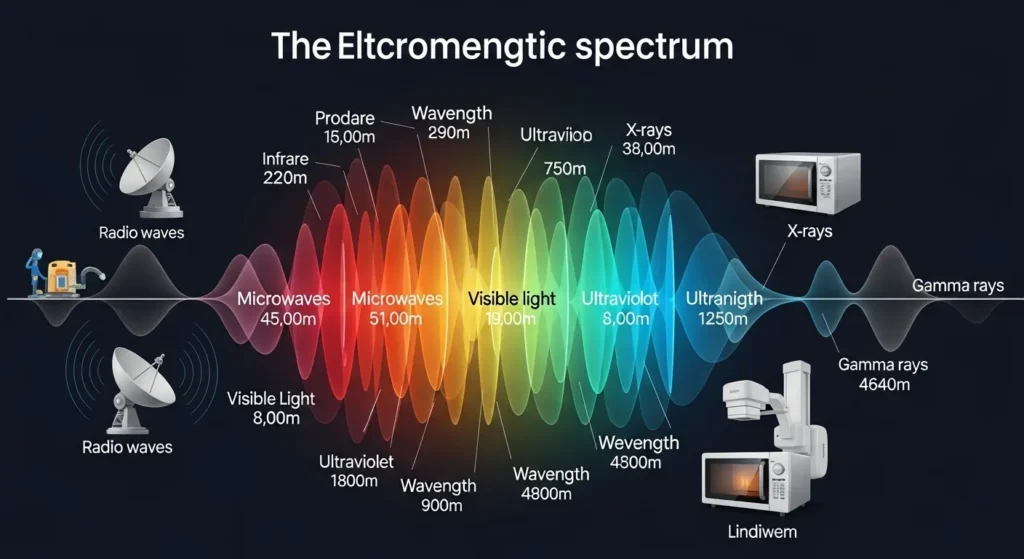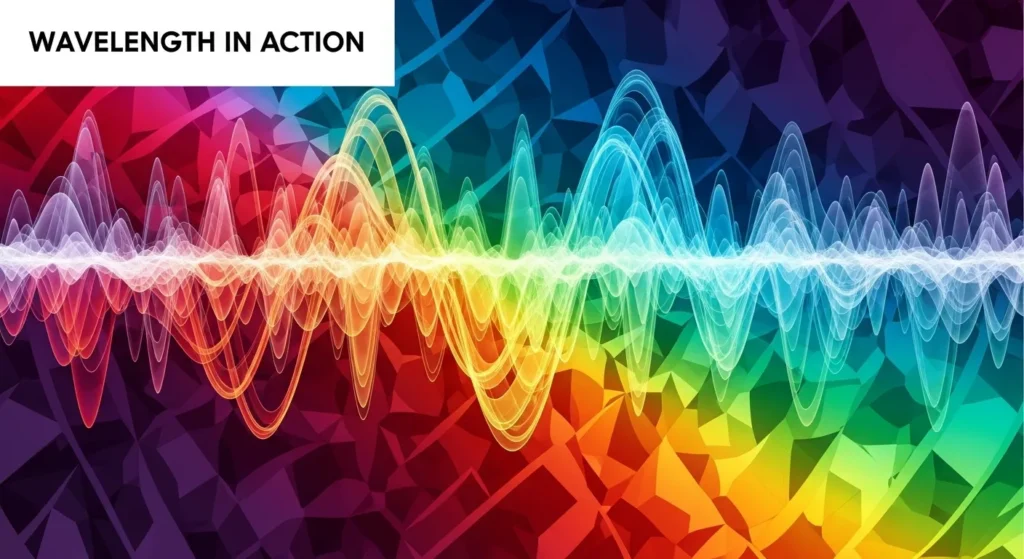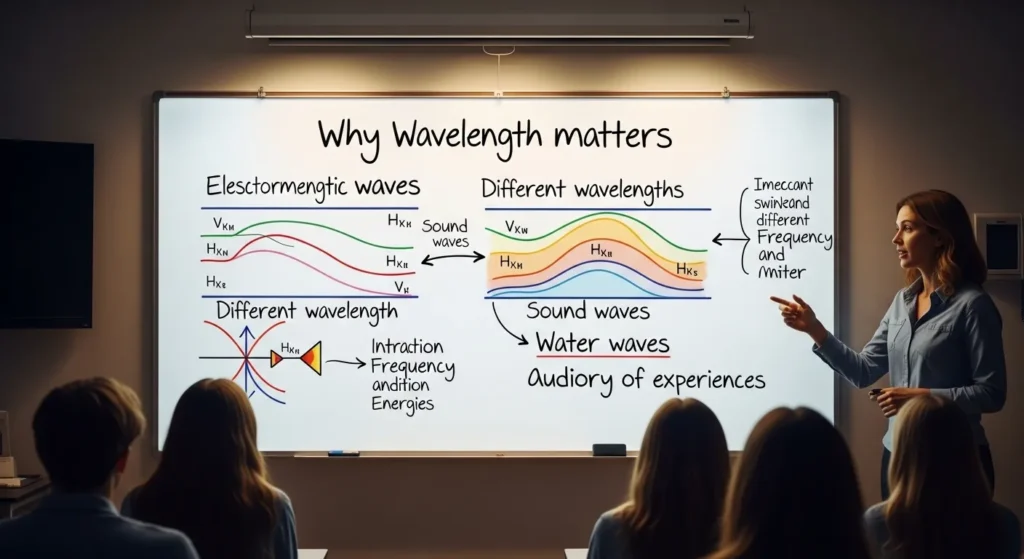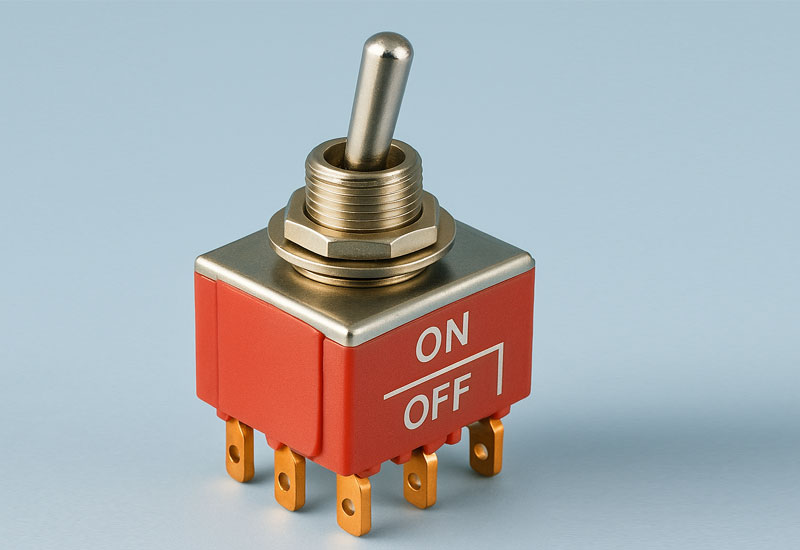Introduction to Wavelength and Vibgyor
Imagine staring at a rainbow, its colors stretching across the sky in a perfect arc. That stunning display is all thanks to wavelength, the invisible force behind light, sound, and so much more. Wavelength is like the heartbeat of waves, determining the vibrant hues of a rainbow or the pitch of your favorite song. In this guide, we’re diving into the world of wavelength, with a special focus on the Wavelength and VIBGYOR spectrum the sequence of colors that makes up visible light. We’ll explore what wavelength means, how it works, and why it matters in everyday life, from the glow of your phone screen to the precision of ultraviolet lasers. Whether you’re a curious beginner or a science enthusiast, this article will break down wavelength in a simple, engaging way, answering common questions and shedding light on its applications in optics, acoustics, and beyond.
What is Wavelength?
Wavelength is the distance between two identical points on a wave, like the crest of one ripple to the crest of the next. Picture a wave in the ocean: the length from one peak to another is its wavelength, measured in units like meters, nanometers, or angstroms. This concept applies to all kinds of waves, whether it’s the visible light wavelength that paints the sky with color, the audio wavelength that carries music to your ears, or the infrared wavelength that warms your skin. In physics, wavelength, often shown as λ (lambda), ties directly to frequency through a simple equation: the speed of the wave equals wavelength times frequency (c = λf). For light waves, that speed is about 300 million meters per second in a vacuum, a constant that helps us understand everything from rainbows to radio signals.
Shorter wavelengths, like those of ultraviolet light, pack more energy and have higher frequencies, while longer wavelengths, like infrared radiation, carry less energy. This relationship shapes how we experience the world. For example, the violet wavelength in the VIBGYOR spectrum appears vivid because of its high frequency, while the red wavelength feels softer due to its lower frequency. Understanding wavelength opens the door to grasping how waves behave, whether they’re light waves dancing through a prism or sound waves echoing in a concert hall.
The VIBGYOR Spectrum: A Closer Look at Visible Light

When sunlight hits a raindrop or passes through a prism, it splits into a band of colors we call the VIBGYOR spectrum, short for Violet, Indigo, Blue, Green, Yellow, Orange, and Red. This is the visible spectrum wavelength range, stretching from about 380 to 750 nanometers. Each color in this sequence has its own unique wavelength, creating the rainbow’s iconic pattern. The term VIBGYOR, often taught in science classes, captures the order of these colors as they appear when white light is dispersed, making it a handy way to remember the visible light frequency range.
The VIBGYOR rainbow is more than just a pretty sight. It’s a window into how light works. When light travels through a prism, each color bends at a different angle because of its wavelength. Violet light, with the shortest wavelength, bends the most, while red light, with the longest wavelength, bends the least. This dispersion creates the VIBGYOR prism effect, a phenomenon you can recreate at home with a simple glass prism and a flashlight. The visible spectrum range is what our eyes can detect, and it’s just a tiny slice of the broader electromagnetic spectrum, which includes everything from microwaves wavelengths to ultraviolet waves.
VIBGYOR Colors and Their Wavelengths

Let’s break down the VIBGYOR colors to understand their wavelengths and frequencies. Violet light, ranging from 380 to 450 nanometers, has the highest frequency in the visible spectrum, around 668 to 789 terahertz, making it the most energetic color. Indigo, a less distinct hue, falls between 450 and 475 nanometers with frequencies of 631 to 668 terahertz. Blue light, from 475 to 495 nanometers and 606 to 631 terahertz, is a staple in everything from LED screens to lasers. Green light, spanning 495 to 570 nanometers with frequencies of 526 to 606 terahertz, is the color our eyes are most sensitive to, making it seem especially bright. Yellow light, between 570 and 590 nanometers with frequencies of 508 to 526 terahertz, pops in streetlights and artwork. Orange light, from 590 to 620 nanometers and 484 to 508 terahertz, gives off a warm glow used in traffic signals. Finally, red light, with the longest wavelength of 620 to 750 nanometers and the lowest frequency of 400 to 484 terahertz, anchors the VIBGYOR spectrum.
In this sequence, red has the highest wavelength in VIBGYOR, while violet, the shortest wavelength color, boasts the highest frequency. This VIBGYOR wavelength order Red, Orange, Yellow, Green, Blue, Indigo, Violet reflects the gradual shift from longer to shorter wavelengths. You can think of it like a musical scale, where each note (or color) has its own pitch (or wavelength), creating a harmonious progression.
How to Calculate Wavelength

Figuring out wavelength is easier than it sounds, and it’s a skill that comes in handy for students, scientists, and engineers alike. The key formula is λ = c / f, where λ is the wavelength, c is the wave’s speed, and f is its frequency. For light waves, the speed is typically 3×10⁸ meters per second in a vacuum, while for sound waves, it’s about 343 meters per second in air. Let’s walk through a couple of examples to see how this works in real life.
Suppose you’re curious about the wavelength of red light with a frequency of 430 terahertz (4.3×10¹⁴ hertz). Plugging into the formula, you divide the speed of light (3×10⁸ meters per second) by the frequency (4.3×10¹⁴ hertz), giving a wavelength of about 697 nanometers. This matches the visible region wavelength for red light, confirming its place in the VIBGYOR spectrum. For a sound wave, like the 440-hertz note of a tuning fork (the A4 pitch), you divide the speed of sound (343 meters per second) by 440 hertz, resulting in an audio wavelength of roughly 0.78 meters, or 78 centimeters. This wavelength affects how the sound feels in a room, whether it’s crisp or resonant.
You can simplify these calculations using online tools like wavelength calculators or even write a quick Python script to automate the process. For example, a script could take frequency and speed as inputs and spit out the wavelength in seconds, making it a breeze for experiments or homework.
Here’s a table showing the VIBGYOR colors along with their approximate wavelengths and frequencies:
| Color | Wavelength (nm) | Frequency (THz) |
| Violet | 380–450 | 668–789 |
| Indigo | 450–475 | 631–668 |
| Blue | 475–495 | 606–631 |
| Green | 495–570 | 526–606 |
| Yellow | 570–590 | 508–526 |
| Orange | 590–620 | 484–508 |
| Red | 620–750 | 400–484 |
🔍 Note: Values are approximate; frequency is calculated using the formula
f = c / λ, where c is the speed of light.
Exploring the Electromagnetic Spectrum: Ultraviolet and Infrared

The VIBGYOR spectrum is just one part of the vast electromagnetic spectrum, which includes waves we can’t see, like ultraviolet light and infrared radiation. Ultraviolet wavelength, ranging from 10 to 380 nanometers, is shorter than visible light, packing more energy. This makes ultraviolet light wavelength ideal for applications like sterilization, where a UV wavelength of 254 nanometers can kill bacteria in water or on surfaces. Ultraviolet lasers, used in eye surgeries and microfabrication, rely on these short wavelengths for precision, as explained in resources on wave properties in electronics.
Infrared wavelength, on the other hand, stretches from 750 nanometers to 1 millimeter, associated with heat and longer waves. Infrared light radiation powers thermal imaging cameras, letting firefighters see through smoke or wildlife researchers track animals at night. An infrared ray wavelength of 850 nanometers is common in night-vision goggles, while infrared waves wavelength in spectroscopy helps scientists analyze materials. The electromagnetic spectrum includes these and other waves, like microwaves, each with unique roles in technology and science.
Wavelength in Action: Real-World Applications

Wavelength isn’t just a concept for text books it’s at work all around us. In optics, the VIBGYOR spectrum is key to spectroscopy, where emission wavelengths reveal the composition of distant stars or chemical samples. You can explore this through light wave diagrams that show how light interacts with matter. In the tech world, ASML EUV lithography uses extreme ultraviolet wavelengths around 13.5 nanometers to etch tiny circuits onto microchips, powering devices like your smartphone, as detailed in ASML’s technology overview.
In acoustics, audio wavelength shapes how sound behaves in spaces like concert halls or recording studios. A low-frequency bass note with a long wavelength might rumble through a room, while a high-pitched note with a shorter wavelength feels sharp, as explored in sound wavelength studies. In electronics, microwaves wavelengths, ranging from 1 millimeter to 1 meter, drive Wi-Fi networks and radar systems, relying on precise wave properties.
Medical fields also harness wavelength. Ultraviolet lasers cut with pinpoint accuracy in surgeries, while infrared radiation wavelength enables non-invasive imaging, like monitoring blood flow. Even in everyday life, wavelength matters think of the orange wavelength in traffic lights or the blue color wavelength in your TV screen. To see wavelength in action, try a simple experiment: shine a flashlight through a prism to split light into the VIBGYOR colors. Notice how each color bends differently, revealing the power of wavelength in shaping light’s behavior.
Answering Common Questions About Wavelength and VIBGYOR
People often have questions about wavelength and the VIBGYOR spectrum, especially when exploring how light and sound work. Let’s tackle some of the most common queries to clear up any confusion.
What does VIBGYOR mean? It’s a shorthand for the colors of the visible spectrum Violet, Indigo, Blue, Green, Yellow, Orange, Red seen in rainbows or when light passes through a prism. Which color has the highest wavelength? Red light, with wavelengths up to 750 nanometers, takes the crown for the longest wavelength in VIBGYOR. What’s the visible light wavelength range? It spans roughly 380 to 750 nanometers, covering all the VIBGYOR colors. How do you calculate wavelength? You use the formula λ = c / f, dividing the wave’s speed by its frequency, as shown in wavelength calculation guides. What’s the wavelength of blue color? Blue light falls between 475 and 495 nanometers, giving it that crisp, vibrant look.
Which color has the maximum frequency? Violet light, with frequencies of 668 to 789 terahertz, has the highest frequency in the visible spectrum, making it the most energetic. What’s the wavelength of yellow colour? Yellow light ranges from 570 to 590 nanometers, creating its bright, cheerful glow. What’s the frequency of red colour? Red light’s frequency is between 400 and 484 terahertz, the lowest in VIBGYOR. Which colour has the shortest wavelength? Violet, with wavelengths as low as 380 nanometers, is the shortest in the visible spectrum. What’s the wavelength of orange colour? Orange light spans 590 to 620 nanometers, perfect for warm, inviting hues. How does a prism create VIBGYOR? A prism bends light based on wavelength, with shorter wavelengths like violet bending more and longer ones like red bending less, producing the VIBGYOR rainbow.
What’s the difference between visible rays and other waves? Visible rays, part of the electromagnetic spectrum, are the only waves our eyes can detect, with wavelengths in the 380–750 nanometer range. Other waves, like ultraviolet or infrared, fall outside this range. What’s the wavelength of green colour? Green light, from 495 to 570 nanometers, is the most visible to our eyes, making it seem especially vivid. Can wavelength affect technology? Absolutely think of microwaves wavelengths in communication or ultraviolet light in sterilization. These questions, inspired by common searches like “People Also Ask,” highlight how wavelength connects to both science and daily life.
Why Wavelength Matters

Wavelength isn’t just a number it’s a key to understanding the world. The VIBGYOR spectrum shows us how light creates color, from the violet wavelength that dazzles in gemstones to the red colour frequency that glows in sunsets. Beyond beauty, wavelength drives innovation. In industries, infrared wave length powers heat sensors, while ultraviolet light wavelength enables everything from tanning beds to cutting-edge manufacturing. In science, studying light spectrum wavelengths helps astronomers decode the universe’s secrets, as seen in resources like NASA’s spectrum guide.
For students, wavelength is a gateway to mastering physics. By experimenting with a light wave diagram or calculating wavelengths, you can see how theory meets reality. For professionals, wavelength shapes fields like telecommunications, where wave properties in electronics guide signal design, or medicine, where precise wavelengths save lives. Even artists use color wavelengths to evoke emotions, from the calming blue color wavelength to the bold orange wavelength.
How to Explore Wavelength Yourself
Want to see wavelength in action? Grab a prism and a flashlight to create your own VIBGYOR rainbow. Hold the prism in sunlight or under a white light, and watch the colors fan out. Notice how the violet wavelength bends sharply while the red wavelength stays straighter. You can also experiment with sound: hum a low note and a high note, feeling how the audio wavelength changes the vibration in your throat. For a techy twist, try coding a simple wavelength calculator using Python, or check out online physics modules to simulate wave behavior.
If you’re curious about advanced applications, read up on ASML EUV to see how tiny wavelengths power modern electronics. Or explore sound wavelength studies to learn how architects design spaces for perfect acoustics. These hands-on activities make wavelength feel real, connecting abstract science to the world around you.
Conclusion
Wavelength is the invisible thread weaving through light, sound, and technology. From the VIBGYOR spectrum’s colorful display to the unseen power of ultraviolet and infrared wavelengths, it shapes how we see, hear, and innovate. By understanding how to calculate wavelength or exploring its role in optics, acoustics, and electronics, you can unlock a deeper appreciation of the universe. Whether you’re marveling at a rainbow, tuning a guitar, or reading about wavelength examples, wavelength is everywhere. So grab a prism, run a calculation, or dive into the light spectrum range the world of wavelength is yours to explore.
FAQ: Common Questions about Wavelength and VIBGYOR
What is VIBGYOR?
VIBGYOR is an acronym for the colors of the visible spectrum: Violet, Indigo, Blue, Green, Yellow, Orange, Red, seen in rainbows or through a prism.
Which Color Has the Highest Wavelength?
Red has the highest wavelength in VIBGYOR, ranging from 620–750 nm.
What is the Visible Light Wavelength Range?
The visible light wavelength range spans approximately 380–750 nm.
How Do You Calculate Wavelength?
Use the formula λ = c / f, where c is the wave’s speed and f is its frequency.
What is the Wavelength of Blue Color?
The blue color wavelength ranges from 475–495 nm.
Which Color Has the Maximum Frequency?
Violet has the highest frequency in VIBGYOR, around 668–789 THz.


